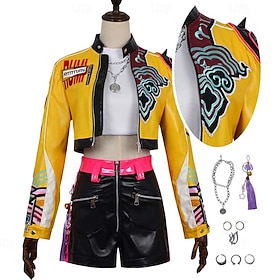A brief overview
Fast fashion, with its cheap garments, rapid turnover, and fast production schedules, is one of the strongest forces within the apparel market today. It is important to recognize that fast fashion’s environmental toll is now starting to catch up to the industry. As climate concerns rise and regulations become stricter, brands like Zara will need to show that sustainability and speed can coexist. The question is not only if fast fashion can slow down, but rather how– and if it even wants to.

Courtesy of Canva
Zara’s Green Commitment: Vision or Just PR?
Zara’s parent company, Inditex recently announced an ambitious target to reduce greenhouse gas emissions by more than 50% by 2030 and to achieve net-zero by 2040, as part of a broader commitment to responsible materials sourcing. Inditex’s objectives include:
- 40% recycled materials
- 25% sustainably produced fibers
- 25% next-gen textiles delivered through innovation
By the end of 2025, all of Zara’s polyester and linen will be sourced from low-impact sources. Inditex has also continued to grow its Zara Pre-Owned platform, encouraging repair, resale, and donation of product categories as part of a path toward circularity from a historically linear business. However, many critics are skeptical. Ultimately, they feel the issue is not about materials sourced, but rather how much is produced. If Zara cannot reduce the number of garments produced per year, then even sustainable fabric options may not matter if they want to meaningfully impact their own environmental footprint. Regulatory Action: Europe’s EPR Restrictions Begin
On January 1, 2025, the European Union began enforcing Extended Producer Responsibility (EPR) regulatory changes for textiles, representing a significant policy structural transition. Brands are now under regulatory obligation to take financial and logistical responsibility for their apparel products from design, manufacturing, to post-consumer waste.
Through this system, fashion brands selling into EU markets must buy into recycling programs, creating product longevity, and design it to be reused at end-of-life. If they do not comply, there will be huge fines, particularly for brands selling into the EU from abroad. These do not represent optional opportunities for brands, but instead signify the commencement of legally mandated sustainability, and it is already beginning to alter the manner of operations employed by European brands.
North America Languishes
Even as Europe takes these amazing regulatory steps, North America is still lagging behind Europe. In Canada, there is no national EPR system for fashion, although there are some municipalities Markham, Ontario, for example, that have undertaken textile recycling programs with some success. Experts estimate it could be a decade before there is a fully functional and coordinated national EPR system, a delay that feels especially stark alongside the shifts redefining luxury’s direction.
This is problematic for the U.S., where textile waste continues to grow with little regulatory scrutiny. Some states are exploring circular fashion options, but there is yet to be a federal framework binding fashion sustainability.
SHEIN and the Ultra-Fast Fashion Problem
Meanwhile, as legacy enterprises like Zara attempt to re-imagine themselves, ultra-fast fashion has a new problem. The speed and hyper-production business model, largely perpetrated by major players like SHEIN, Fashion Nova and Boohoo, has increased the speed of fashion, with thousands of new styles arriving every day, sometimes with the help of artificial intelligence utilizing real-time analysis of trends.
When it comes to environmental impact, the numbers are huge; SHEIN alone reported “16.7 million metric tons of CO₂ emissions” (SHEIN 2023), up 176% in two years, and over “99%…” (SHEIN 2023)” of their emissions are attributed to their supply chain. Although SHEIN states that it is spending on sustainability, the current business focus of hyper-production and disposable trends does not align with circularity and is not a sustainable practice.
SHEIN is not under fire in the sustainability conversation, as it has faced scrutiny and a recent investigation by the Italian Antitrust Authority for possible misleading environmental statements. However, larger questions arise in these discussions – can brands that profit from over-consumption ever be truly sustainable, or is it simply “greenwashing” in another form?
Consumers are listening to the sustainability conversation; however, there hasn’t been much change.
There’s no denying that awareness of consumers’ environmental impact is growing. We are seeing an increase of second-hand and rental platforms as a sign of this, especially with Gen Z and Millennials, but the convenience (and cost) of fast fashion keeps them coming back, and affects all of us. Even the most conscientious consumer can struggle with ethical intention and their budgeting, and lifestyle aesthetic realities, a tension that becomes even sharper in light of recent restrictions on ultra-fast fashion.
Until there are major shifts in consumer behavior, sustainable fashion will remain a niche market, especially without any major disruption to the model or legislation.
So, where do we go from here?
In 2025, we moved from asking if fast fashion must change – we have a consensus that it does. We are now having conversations about whether brands will actually take actions that go beyond surface-level sustainability.
Transformation means much more than just recycled fabric and buzz words; it means rethinking supply chains, must slow down production cycles, adhere to proposed sustainability legislation in adherence globally, and truly consider what success in fashion means – not only in terms of units sold, but also in terms of environmental and social value created. Fashion is not just a mirror for culture, it is a driver of culture – and the world is watching. Are we able to move forward or are we regressing?





















